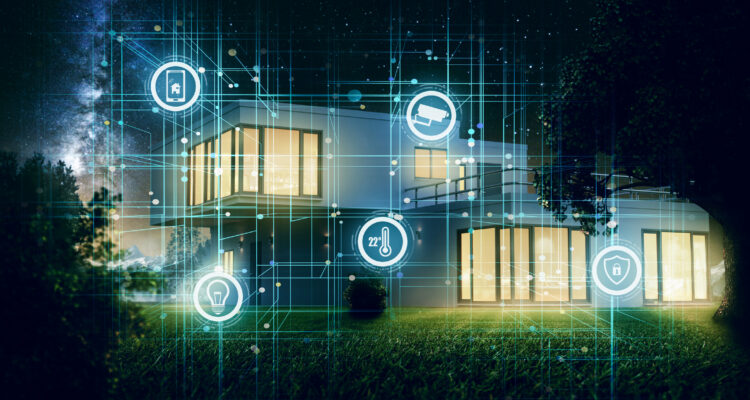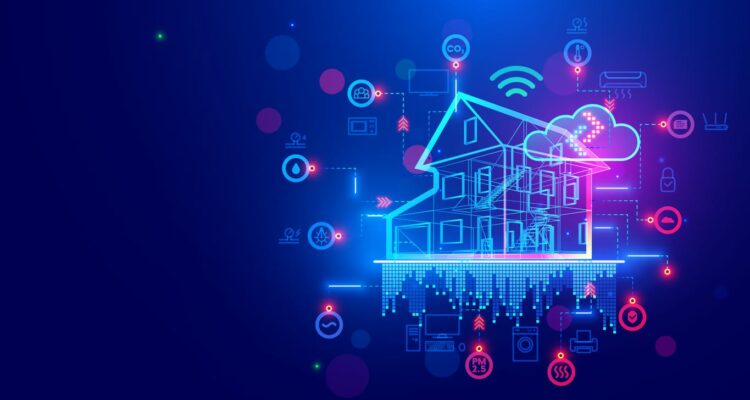With the rapid rise of online shopping, home deliveries have become a staple in our…

The Evolution of Residential Security Monitoring: A Closer Look
Residential security monitoring systems have transformed over the years from basic alarms to sophisticated, integrated systems that offer real-time protection and control. Whether you are interested in home security or just a tech history buff, join us in exploring the evolution of residential security monitoring systems. From early inventions to today’s tech-driven solutions, and discuss how they continue to improve home safety.
The Early Days of Residential Security – Pioneering Protection
When you first think of simple home security – locks and simple, often DIY, alarm systems. But the real technological leap in residential security came with the development of electromagnetic alarms in the 19th century.
- 1853: Augustus Pope invented an electromagnetic circuit that triggered a bell when doors or windows were opened.
- 1900s: Edwin Holmes commercialized electric alarm systems, introducing the first centralized monitoring approach revolutionizing how people thought about security.
- 1960s-1970s: Home security systems became more accessible to middle-class families, expanding the market beyond elite households.
These early systems laid the groundwork for the concept of centralized monitoring and home protection, which would evolve significantly in the coming decades.
The Rise of Centralized Monitoring Systems
The mid-20th century brought the widespread use of telephone-based monitoring systems, allowing homeowners to be connected to central stations. This shift was crucial in moving from purely reactive systems to proactive monitoring solutions – an approach that continues today!
- Central Monitoring Stations: Enabled professional response teams to monitor multiple homes and dispatch help during emergencies.
- Integration with Fire Alarms: Many security systems began incorporating fire detectors and smoke alarms, broadening the scope of residential protection.
By the 1980s, centralized monitoring was commonplace, and companies offered more affordable and reliable solutions for homeowners.
The Technological Revolution of the 21st Century

If you are over the age of 30, it is no secret that the 2000s saw an explosion in technological innovation. This shift significantly reshaped residential security monitoring systems. Key innovations during this era include:
- Wireless Systems: Eliminated the need for hardwiring, making installation easier and more affordable.
- Smartphones: Enabled remote monitoring and control of security systems through apps.
- Self-Monitoring: Homeowners could now receive real-time alerts and notifications directly on their devices.
This period marked the move from dependence on third-party monitoring services to a combination of self-monitoring and professional monitoring, giving homeowners greater control over their security. Third-party monitoring plus that greater control is deeply integrated and expected in many systems today.
Video Surveillance: A Game-Changer
One of the most impactful advancements in residential security monitoring has been video surveillance. What was once an expensive and complex option is now widely accessible to homeowners.
Key features of modern video surveillance:
- Affordable Installation: Cameras are now compact, easy and fast to install.
- Advanced Features:
- Motion detection
- Night vision
- AI-powered analytics that distinguish between people, animals, and objects
- Cloud Storage: Video footage can be stored securely in the cloud, allowing homeowners to access recordings from anywhere.
- Remote Viewing: Homeowners can monitor live feeds via their smartphones or other devices.
These innovations make it easier for people to oversee their homes and address potential threats in real time.
The Impact of Smart Homes on Security Monitoring
As smart home technology gained popularity, it began integrating with residential security systems, creating a seamless and comprehensive approach to home security.
Key components of smart home-integrated security systems:
- Smart Locks: Allow homeowners to lock and unlock doors remotely.
- Video Doorbells: Provide live video feeds and enable two-way communication with visitors.
- Smart Lights: Turn lights on and off to simulate presence when homeowners are away.
- Voice Assistants: Devices like Alexa and Google Home allow users to control their security systems via voice commands.
With the rise of smart homes, these technologies have created an ecosystem where various devices communicate and work together to provide total home security.
The Future of Residential Security Monitoring
The future of residential security monitoring is incredibly promising, with new technologies emerging to make systems smarter, faster, and more secure.
Emerging trends in residential security monitoring include:
- AI and Predictive Analytics: AI-powered systems will analyze patterns of activity and detect potential threats before they happen. For example, a system might notify a homeowner if someone is behaving suspiciously near the property.
- Biometric Security: Technologies like fingerprint recognition, facial recognition, and voice authentication will add an extra layer of protection, ensuring that only authorized individuals can access a home.
- Environmental Monitoring: Modern systems are starting to incorporate sensors that detect floods, gas leaks, or drastic temperature changes, further expanding their role in home protection.
- Cybersecurity: As homes become more connected, cybersecurity will become critical to protect personal data and prevent hacking of smart security devices.
Key Milestones in the Evolution of Residential Security Monitoring Systems
To summarize the key milestones:
- 1853: Augustus Pope’s electromagnetic alarm system.
- 1900s: Edwin Holmes introduces commercial burglar alarms.
- 1960s-1970s: Centralized monitoring systems became popular in middle-class homes.
- 2000s: Wireless technology, smartphone integration, and self-monitoring emerge.
- Present: Smart home technology, video surveillance, and AI redefine residential security.
Trusted Security Solutions Since 1969
Today’s residential security systems provide much more than basic protection—they deliver peace of mind, convenience, and an unmatched level of control. As AI, smart home technology, and predictive analytics continue to advance, the future of home security promises even greater innovation and efficiency.
At U.S. Protective Services, we believe our commercial and residential clients should experience the full potential of their security investment, including the peace of mind that comes with reliable protection. Click here to contact us today!
Our professional-grade security systems offer comprehensive monitoring, combining simplicity with intelligence. Because when it comes to security, “just okay” can still be costly—and stressful. We ensure your security is both smarter and hassle-free.



